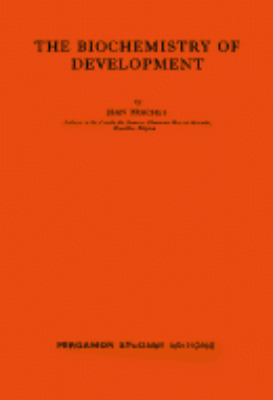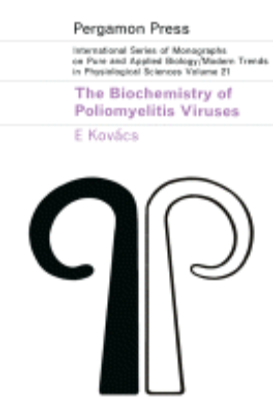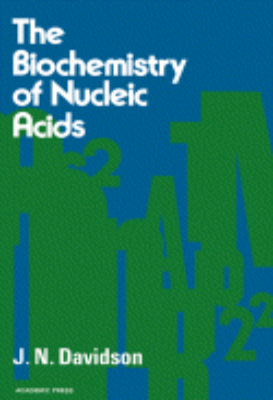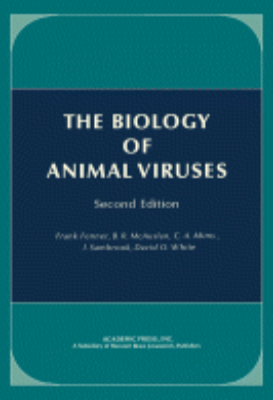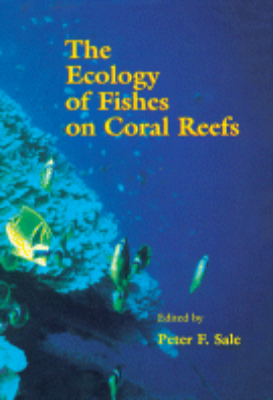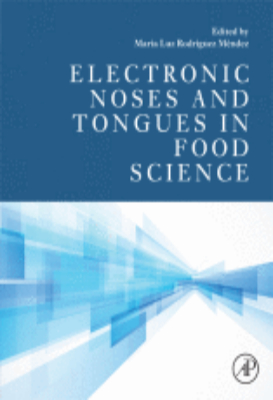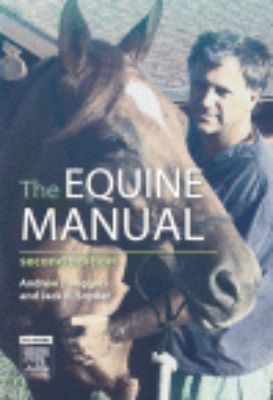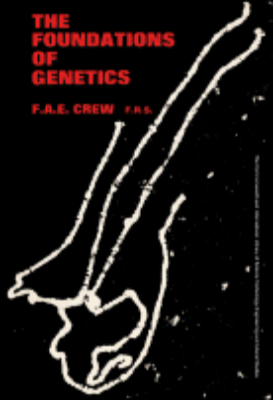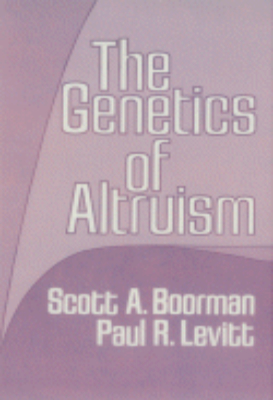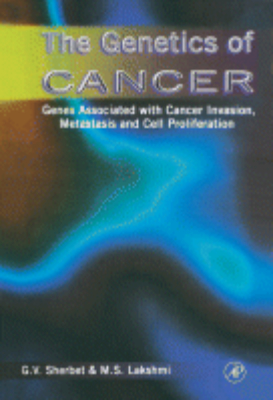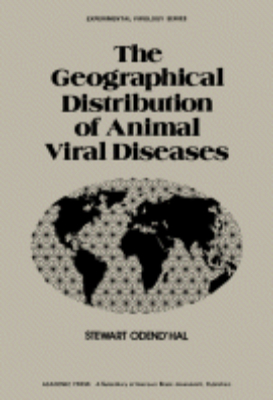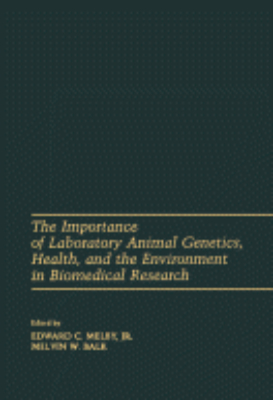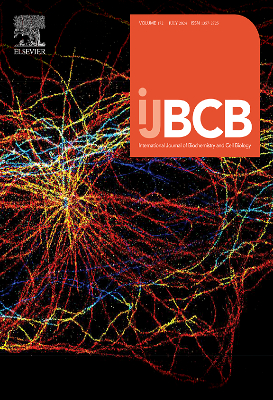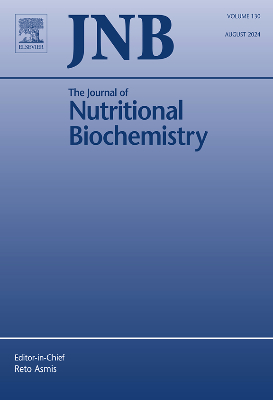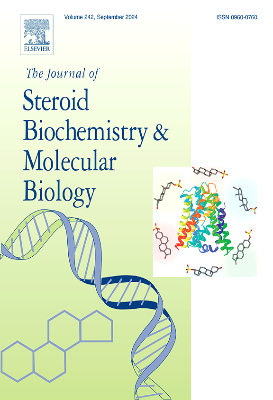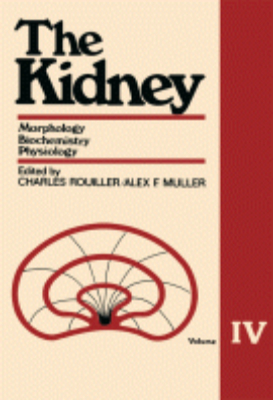E-Resources
The Biochemistry of Development
The Biochemistry of Development focuses on advances in chemical embryology. The book first discusses gametogenesis, including the processes of oogenesis and spermatogenesis. The text describes fertilization and related aspects, such as physical, morphological, and metabolic changes during fertilization. The selection also underscores the process of cleavage. Concerns include morphology and cytochemistry of dividing eggs; importance of nucleic acids and proteins; formation of the furrow; and biochemistry of cleavage. The text also looks at the chemical embryology of invertebrate eggs. Examinations are done on the eggs of worms, mollusks, sea urchins, and ascidians. The book also evaluates the chemical embryology of vertebrate eggs. RNA and protein metabolism of intact eggs; chemical nature of inducing substances; and physical properties of inducing agents are underscored. The text also offers information on the biochemistry of differentiation and the biochemical interactions between the nucleus and the cytoplasm during morphogenesis. The selection is highly recommended for readers wanting to study chemical embryology.
The Biochemistry of Foreign Compounds
The Biochemistry of Foreign Compounds presents the various aspects of biochemistry of foreign compounds in relation to toxicology, pathology, and pharmacology. This book discusses the classification of foreign compounds according to usage, namely, food additives, drugs, pesticides, industrial chemicals, and natural foreign compounds. Organized into two sections encompassing 12 chapters, this book starts with the absorption and secretion of foreign compounds. This text then discusses the two phases of reaction in the metabolism of foreign compounds. Other chapters consider the rate at which each reaction proceeds wherein its relative significance may be affected by many factors that may result in changes in the pattern of metabolism and differences in toxicity. This book discusses as well the physiological factors that affect metabolism, including age, sex, pregnancy, disease, and the nutritional state of the animal. The final chapter deals with the metabolism of some of the commonly used industrial chemicals. This book is a valuable resource for biochemists, chemists, toxicologists, pharmacologists, and pathologists.
The Biochemistry of Parasites
The Biochemistry of Parasites documents the proceedings of the Satellite Conference of the 13th Meeting of the Federation of European Biochemical Societies (FEBS) held in Jerusalem, August 1980. The conference presented the opportunity to summarize work done by parasite biochemists and introduce this field to workers in classical biochemistry. The 45 papers in this volume are divided into two sections covering parasite biomembranes and parasite metabolism. The papers in the biomembranes section are further divided in two parts: the parasite membrane (Part I) and adherence of the parasite to host tissues (Part II). Part I is concerned with both classical and novel aspects of membrane structure and function. It includes studies on the membrane of the leishmania; the surface coat of trypanosomes; membrane function; and transport across the cell membrane. Part II covers topics such as the adherence of pathenogenic microorganisms and the importance of of carbohydrates in parasite-host adherence. The papers in the parasite metabolism section focus primarily on three groups of parasites: leishmania, malaria, and helminthes. Topics covered include the isolation and characterization of a proteolytic enzyme from Plasmodium lophurae (duck malaria); the selection and culture of malaria parasites resistant to aminopterin; and regulation of cyclic AMP metabolism in Leishmania promastigotes and amastigotes.
The Biochemistry of Poliomyelitis Viruses
The Biochemistry of Poliomyelitis Viruses deals with the interrelationships and differences of positions in the field of poliomyelitis research. This volume presents a general introduction to viruses as to their descriptions and biological, biochemical, and epidemiological aspects. Clinical poliomyelitis, test measurements in the cerebrospinal fluid, and the actions of the poliomyelitis virus are explained. The isolation of the poliomyelitis virus and some aspects of its immunology and serology through refinements of serologic tools and special techniques, plus the state of poliovirus purification, are noted. This book also gives assumptions about the virus' synthetic activities in vivo based on experiments conducted in other viral diseases other than the polio virus. This text also notes that important discoveries such as those made by Gierer and Schramm or Fraenkel-Conrat provide updated poliomyelitis research. Other research studies are taken into consideration and emphasis is given to the biochemical concept of the polio infection and the related features induced during infection such as the presence of tumors. The most promising trend in research is in the study of enzymes of infected cells leading to an understanding of the biochemistry of viral diseases. The use of inference microscopy and X-ray analysis of cell mass is recommended. This book will prove invaluable for microbiologists, disease investigators, clinical workers, and research scientists.
The Biochemistry of the Nucleic Acids
The Biochemistry of the Nucleic Acids provides an elementary outline of the main biochemical features of nucleic acids and nucleoproteins. The book describes the occurrence and biological functions of nucleic acids, their chemical constituents, and catabolism. This text is organized into 14 chapters and begins with a historical overview, from the discovery of the nucleic acids to their isolation and characterization. The discussion then shifts to bacterial transforming factors and transduction phenomena, along with the genetic function and metabolic stability of DNA, the chemical composition of the cell nucleus, and the Feulgen nucleal reaction. The reader is methodically introduced to the structure and biosynthesis of RNA and DNA; nucleic acids found in viruses; and biosynthesis of mononucleotides. An account of nucleases and related enzymes is also given. A chapter on the precise mechanism by which nucleic acids are broken down in the cell concludes the book. This book is intended for students of biochemistry, chemists, and biologists.
The Biology of Animal Viruses
The Biology of Animal Viruses, Second Edition deals with animal viruses focusing on molecular biology and tumor virology. The book reviews the nature, chemical composition, structure, and classification of animal viruses. The text also describes the methods of isolating animal viruses, how these are grown in the laboratory, assayed, purified, and used in biochemical experiments. The book also describes the structure and chemistry of many known viruses such as the papovaviridae, herpes virus, poxvirus, coronavirus, or the Bunyamwera supergroup. The book then explains the structure and function of the animal cell including the cytoplasmic organelles, the nucleus, inhibitors of cell function, and viral multiplication. Other papers discuss in detail the multiplication of the DNA and RNA viruses, whose mechanisms of multiplication differ from those of other viruses. Other papers discuss the known prevention and treatment methods of viral diseases, as well as the epidemiology and evolution of viral diseases resulting from human's disturbance of the biosphere and from medical and experimental innovations. The text can prove useful for immunologists, veterinarians, virologists, molecular researchers, students, and academicians in the field of cellular microbiology and virology.
The Biology of Frankia and Actinorhizal Plants
The Biology of Frankia and Actinorhizal Plants provides a comprehensive review of Frankia and the actinorhizal plants. It reviews the state of knowledge on all aspects from molecular genetics through ecology to practical applications; describes methods used in research and practical applications; and is a guide to the literature. The book begins with overviews of Frankia and the actinorhizal plants, and developments in the field prior to the first confirmed isolation of Frankia. Next is a series of authoritative chapters on the biology of Frankia, the symbiosis, and actinorhizal plants. Although methods used in research and in practical applications are included throughout the book, they are given special emphasis in the middle section. The final section of the book concerns the ecology and current and potential uses of actinorhizal plants in both the temperate regions and the tropics. This work is intended as a reference text and handbook of methods for a wide audience including established workers and students of Frankia and actinorhizal plants, specialists and students in other areas of nitrogen fixation (including the Rhizobium-legume symbiosis), soil microbiologists, plant physiologists, ecologists, general biologists, foresters, specialists in land reclamation, and managers requiring an authoritative overview of this rapidly developing field.
The Cat
Comprehensive in scope and exclusively devoted to feline medical care, Dr. Susan Little's The Cat: Clinical Medicine and Management is an essential resource for anyone who provides complete, state-of-the-art care to cats. In one convenient volume, you'll find authoritative, clinically-focused information enhanced by full-color illustrations, tables, boxes, algorithms, key points, and much more all in a format designed for quick access. Dr. Little and her expert contributors address the unique concerns and challenges facing the feline practitioner, including the latest advances in feline medical diagnosis and management and their clinical applications to everyday practice. User-friendly and complete, The Cat is also available as an e-book, giving you easy access to the complete, fully-searchable contents online.
The Detection of Fish
The Detection of Fish is a guide on how to locate fish through the indications of its presence in the area and the use of different acoustic instruments. The book has seven chapters, which cover the different types and locations of fisheries; the evaluation of resources of exploratory fishing; the position of fisheries; the two fish detection methods; basic principles of acoustics in relation to fishing; and the estimation of abundance of fish with an echo sounder. Also covered are the study of behavior of fish through acoustic means; the deep scattering layer and its different investigations; and the use of more complex acoustic instruments. The text is recommended for beginning fishermen, entrepreneurs who wish to venture in the fishing business, and those who work for government agencies who oversee fishing and aquatic resources. Marine biologists, especially those concerned with the study of fish, would also find the book as a handy guide.
The Dog Breeder’s Guide to Successful Breeding and Health Management
This unique resource offers a general overview of canine body systems and how each system affects the breeding process. Key topics include nutrition, pharmacology, microbiology, parasitology, vaccinations, genetics, and endocrinology, as well as normal anatomy and disorders of the male and female reproductive systems.
The Ecology of Fishes on Coral Reefs
This book provides a comprehensive and up-to-date review of the ecology of coral reef fishes presented by top researchers from North America and Australia. Immense strides have been made over the past twenty years in our understanding of ecological systems in general and of reef fish ecology in particular. Many of the methodologies that reef fish ecologists use in their studies will be useful to a wider audience of ecologists for the design of their ecological studies. Significant among the impacts of the research on reef fish ecology are the development of nonequilibrium models of community organization, more emphasis on the role of recruitment variability in structuring local assemblages, the development and testing of evolutionary models of social organization and reproductive biology, and new insights into predator-prey and plant-herbivore interactions.
The Economics and Organization of Brazilian Agriculture
"The Economics and Organization of Brazilian Agriculture: Recent Evolution and Productivity Gains presents insights on Brazilian agriculture and its impressive gains in productivity and international competitiveness, also providing insightful examples for global policymakers. In Brazil, as in many countries, many economists and policymakers believe that agriculture is a traditional, low-tech sector that crowds out the development of other economic sectors and the country. This book shows that this anti-agriculture bias is ill-informed, and with population growth, rising incomes, urbanization and diet changes especially in developing countries like China and India on the rise, the demand for food is expected to double in the next 40 years. Brazil has the natural resources, technology and management systems in place to benefit from this expected growth in food consumption and trade. Through real-world examples, the book shows how other low-latitude countries with tropical climate and soils like Brazil especially in sub-Saharan Africa can benefit from the agricultural technology, production, and management systems developed in Brazil. Case studies in each of three key categories, including technology, resource management, and effective government programs provide valuable insights into effective decision-making to maximize the effect of each. Key Features. Provides important and practical insights into achievable agricultural options via case studies. Addresses the use of natural resources, technological advances, and management systems to create viable, adaptive economic growth. Applies lessons learned in Brazil to improving both economic and ecological resource-sustainable agriculture for other regions and countries"
The Electronic Nose and Tongue in Food Science
Electronic Noses and Tongues in Food Science describes the electronic products of advanced chemical and physical sciences combined with intuitive integration of microprocessors, advanced bioinformatics and statistics. These include, for example, voltammetric, bio-electronic, piezoelectric platforms made from a variety of components including, nanoparticles, enzyme biosensors, heavy metals, graphite-epoxy composites, metal oxide semiconductors, microelectrodes, microfluidic channels, pre-manufactured gas sensors, redox enzymes and others and is an ideal resource for understanding and utilizing their power in Food Science settings. Devices used to analyse one particular food item can theoretically be adapted for other food items or components. This does not just mean the re-deploying the physical platforms but also the mode of bioinformatic and statistical analysis. This includes artificial neural networks (ANN), linear discriminant analysis (LDA), partial least squares (PLS), principal component analysis (PCA) etc. In other words, there is cross transference of chemistry, physics, concepts, techniques, findings and approaches from one food to another. Electronic noses and tongues are two of these devices but are advancing in application and importance. This book provides examples of the use of electronic noses and tongues to characterise components that contribute to sensory or compositional profiles, from ripening to harvesting and from storage of raw materials to packaging and consumption. These devises are suitable for high-throughput analysis, quality control or to determine the nature and extent of spoilage and adulteration, and have also been used to ascertain the geographical origins of food and mixtures.
The Equatorial Rain Forest
The Equatorial Rain Forest: A Geological History presents the equatorial vegetation as a dynamic entity with varied and highly significant history. It also discusses other types of equatorial regions. It addresses the vegetational history from a palaeoecological viewpoint. Some of the topics covered in the book are the vegetation of equatorial regions; the prelude to the quaternary; the quaternary vegetation of equatorial Latin America; the quaternary vegetation of equatorial Africa; the cretaceous period; and the quaternary vegetation of equatorial indo-malesia. The value of vegetational history is fully covered. The effect of man on vegetation is discussed in detail. The text describes in depth the methods of studying vegetational history. The Paleocene, Eocene, and Oligocene epochs are presented completely. A chapter is devoted to the palynological evidence and synthesis. Another section focuses on the xeroseres, hydroseres and related successions. The book can provide useful information to botanists, geologists, students, and researchers.
The Equine Manual
This second edition of the popular resource serves as a ready reference for equine practitioners. It provides comprehensive coverage of all aspects of equine medicine and many surgical conditions. It is a hands-on, user-friendly text aimed at the busy practitioner, veterinary students, specialist equine technicians and others with an interest in horse health. Covers new topics, including intensive care, the pre-purchase examination, equine behavior, and anesthesia (including euthanasia).
The Evolution of Genetics
The Evolution of Genetics provides a review of the development of genetics. It is not intended as a history of the science of heredity. By a brief and general survey, however, it seeks to show the connections of past to present research, and of current discoveries to future investigations. The book opens with a chapter on the legacy of classical genetics. This is followed by separate chapters on the use of microorganisms in molecular genetics; the structure and replication of genetic material; mutation and recombination of genetic material; the heterocatalytic function of genetic material; and concludes with a discussion of the future of genetics. Undergraduates considering a career of teaching or research in biology, students who are embarking on graduate studies in biology, professional biologists working in fields other than genetics but interested in current research on heredity, and laymen who have had some education in biology and have a continued interest in biological science may find something useful in this book.
The Evolution of Plant Physiology
"Coupled with biomechanical data, organic geochemistry and cladistic analyses utilizing abundant genetic data, scientific studies are revealing new facets of how plants have evolved over time. This collection of papers examines these early stages of plant physiology evolution by describing the initial physiological adaptations necessary for survival as upright structures in a dry, terrestrial environment. The Evolution of Plant Physiology also encompasses physiology in its broadest sense to include biochemistry, histology, mechanics, development, growth, reproduction and with an emphasis on the interplay between physiology, development and plant evolution. Key Features. Contributions from leading neo- and palaeo-botanists from the Linnean Society. Focus on how evolution shaped photosynthesis, respiration, reproduction and metabolism.. Coverage of the effects of specific evolutionary forces -- variations in water and nutrient availability, grazing pressure, and other environmental variables"
The Exergy Method of Thermal Plant Analysis
The Exergy Method of Thermal Plant Analysis aims to discuss the history, related concepts, applications, and development of the Exergy Method - analysis technique that uses the Second Law of Thermodynamics as the basis of evaluation of thermodynamic loss. The book, after an introduction to thermodynamics and its related concepts, covers concepts related to exergy, such as physical and chemical exergy, exergy concepts for a control method and a closed-system analysis, the exergy analysis of simple processes, and the thermocentric applications of exergy. A seven-part appendix is also included. Appendices A-D covers miscellaneous information on exergy, and Appendix E features charts of thermodynamic properties. Appendix F is a glossary of terms, and Appendix G contains the list of references. The text is recommended for physicists who would like to know more about the Exergy Method, its underlying principles, and its applications not only in thermal plant analysis but also in certain areas.
The Foundations of Genetics
The Foundations of Genetics describes the historical development of genetics with emphasis on the contributions to advancing genetical knowledge and the various applications of genetics. The book reviews the work of Gregor Mendel, his Law of Segregation, and of Ernst Haeckel who suggested that the nucleus is that part of the cell that is responsible for heredity. The text also describes the studies of W. Johannsen on "pure lines," and his introduction of the terms gene, genotype, and phenotype. The book explains the theory of the gene and the notion that hereditary particles are borne by the chromosomes (Sutton-Boveri hypothesis). Of the constituent parts of the nucleus only the chromatin material divides at mitosis and segregates during maturation. Following studies confirm that the chromatin material, present in the form of chromosomes with a constant and characteristic number and appearance for each species, is indeed the hereditary material. The book describes how Muller in 1927, showed that high precision energy radiation is the external cause to mutation in the gene itself if one allele can mutate without affecting its partner. The superstructure of genetics built upon the foundations of Mendelism has many applications including cytogenetics, polyploidy, human genetics, eugenics, plant breeding, radiation genetics, and the evolution theory. The book can be useful to academicians and investigators in the fields of genetics such as biochemical, biometrical, microbial, and pharmacogenetics. Students in agriculture, anthropology, botany, medicine, sociology, veterinary medicine, and zoology should add this text to their list of primary reading materials.
The Genesis and Classification of Cold Soils
The Genesis and Classification of Cold Soils exposes the processes involved in the development of the principal kinds of soils that occur in cold regions and introduces readers to the classification of those soils. The book uses the terminologies and concepts of the description of soils provided by the Soil Taxonomy of the United States. Topics covered in the book include aspects of temperature relationships in cold soils; effects of freezing temperatures on the soil properties; the salient features of the U.S. Soil Taxonomy system; and the taxonomies of Canada, the U.S.S.R., and The Food and Agriculture Organization (FAO). Pedologists, agriculturists, engineers, and researchers will find the book insightful.
The Genetics of Altruism
The Genetics of Altruism covers the primary findings on social evolution, social trait, and altruism from a population genetics standpoint to establish a system of genetic boxes. It presents an evolutionary question with two faces: Why are there so many social species Why, in all the diversity of the animal kingdom, are the social species so few To address the evolutionary question, this book focuses on recognition of the fact that on an evolutionary time, scale genetics must underlie all changes in the capacity for social structure and other aspects of organic evolution. It presents comparative analyses framed in mathematical terms; mathematical concepts as a means of getting outside human, perhaps more generally primate and carnivore; frames of reference; and alternative network combinatorics as a natural basis for comparing social structures that are phylogenetically remote. It also discusses the comparative biology of social behavior on a purely descriptive basis through the social and evolutionary structures emergent. The book concludes by discussing major evolutionary pathways, various kinds of preadaptedness for sociality, and the use of cascade principle to suggest ways in which human evolution may have been a special case. This book is a valuable resource for biologists, social scientists, researchers, students, and all those who want to broaden their knowledge in the field of social behavior and altruism.
The Genetics of Cancer
Written by internationally recognized experts, The Genetics of Cancer provides up-to-date information and insight into the genetic basis of cancer and the mechanisms involved in cancer invasion and its secondary spread. This volume presents the deregulation of the cell cycle in tumor development and integrates the function of tumor suppressor genes, oncogenes, and metastasis-associated genes in the pathogenesis and progression of cancer. The Genetics of Cancer will be useful to all graduate students, clinicians, and researchers working in the fields of cancer biology, genetics, and molecular biology.
The Geographical Distribution of Animal Viral Diseases
The Geographical Distribution of Animal Viral Diseases attempts to shed some light on the global distribution of 110 different viral diseases, mainly of livestock and companion animals. The world literature was screened for 110 different viruses, and maps were prepared. These maps delineate the global distribution of pathogenic viruses based on authenticated reports from a variety of reliable sources. Four viruses were categorized as affecting more than one species to a significant degree (astrovirus, rabies, rotaviruses, and Rift Valley fever). The largest number of maps involved viruses that affect humans. Of the 28 viruses a large number were from the California encephalitis group. Ten of the 28 viruses were reported only in the Eastern Hemisphere, 14 only in the Western Hemisphere, and four were worldwide. Birds were the next most frequently affected group with the 15 viruses, followed by pigs with 14 viruses. Overall the vector-borne viruses appear to have much sharper and clear-cut geographical boundaries than the others.
The Importance of Laboratory Animal Genetics Health and the Environment in Biomedical Research
The Importance of Laboratory Animal Genetics, Health, and the Environment in Biomedical Research documents the proceedings of the Fifth Charles River International Symposium on Laboratory Animals, in Heidelberg, Federal Republic of Germany, March 14-16, 1983. These papers examine how the health and genetic monitoring of laboratory animals, coupled with environmental influences, affect the investigations of oncologists, toxicologists, or pharmacologists. The book is organized into four parts. Part I focuses on the health monitoring of laboratory animals for biomedical research. It includes studies on the effects of health and health monitoring in toxicology studies, oncology studies, and pharmacologic studies. Part II deals with the genetic monitoring of laboratory animals. It examines the causes of genetic alternation in laboratory animals and ways to prevent them. Part III considers the environmental monitoring that is necessary for research on laboratory animals. Part IV on new research frontiers includes studies on the production of monoclonal antibodies for the experimental and therapeutic modulation of laboratory animals, and the quality control aspects of animal experimentation.
The International Cocoa Trade
"An overview of the history of cocoa, the factors affecting its production and consumption as well as how the trade is conducted, various risks mitigated, and by whom. The International Cocoa Trade is a work designed to inform all on the subject of cocoa and an essential guide for those involved in its trade.Dr J. Vingerhoets, Executive Director, ICCOCocoa is a valuable commodity, and the cocoa trade involves many different parties from growers and exporters through dealers and factories to those trading futures and options and the banks they deal with. The International Cocoa Trade provides an authoritative and comprehensive review of the cocoa trade at the beginning of the twenty-first century, and the main factors that drive and affect that business.The opening chapter of the third edition examines the history and origins of the international cocoa trade, and its recent developments. The agronomics of cocoa production are discussed in chapter two whilst chapter three deals with the environmental and practical factors affecting cocoa production. Chapters four, five and six cover issues around the export and trading of physical cocoa, including the actuals market, the physical contracts used and the futures and options markets. In chapter seven, the international consumption and stocks of cocoa are reviewed with chapter eight discussing the issue of quality assessment of cocoa beans for international trade. Finally, chapter nine focuses on the end product, examining the processing of cocoa beans and the manufacture of chocolate. Updated appendices provide copies of some of the most important documents used in the cocoa trade, including contracts, sale rules and world production statistics.This comprehensively updated third edition of The International Cocoa Trade ensures its continued status as the standard reference for all those involved in the production consumption and international trading of cocoa. Key Features. Provides an authoritative and comprehensive review of the cocoa trade at the beginning of the twenty-first century, and the main factors that drive and affect that business. Examines the history and origins of the international cocoa trade, and its recent developments featuring a discussion of environmental and practical factors affecting cocoa production. Explores issues concerning the export and trading of physical cocoa, including the actuals market, the physical contracts used and the futures and options markets
The Kidney Morphology Biochemistry Physiology
The Kidney: Morphology, Biochemistry, and Physiology, Volume IV covers the developments in the study of renal structure and function, particularly on the subcellular and molecular level. This book is composed of six chapters that consider the correlation of kidney's structure with function, as well as the participation of the kidney in metabolic systems and its relation to other organs. This text discusses topics such as experimental and renal transplantation, the structure and function of the juxtaglomerular apparatus, and the macula densa. Other chapters deal with the gaseous and substrate metabolism of the kidney and the role of this organ in the osmotic concentration and dilution of the urine. The remaining chapters explore hydrogen secretion, potassium and sodium excretion, and the correlation of the kidney with vitamins and parathyroid gland. This book is of value to morphologists, biochemists, physiologists, pathologists, pharmacologists, and clinicians.

